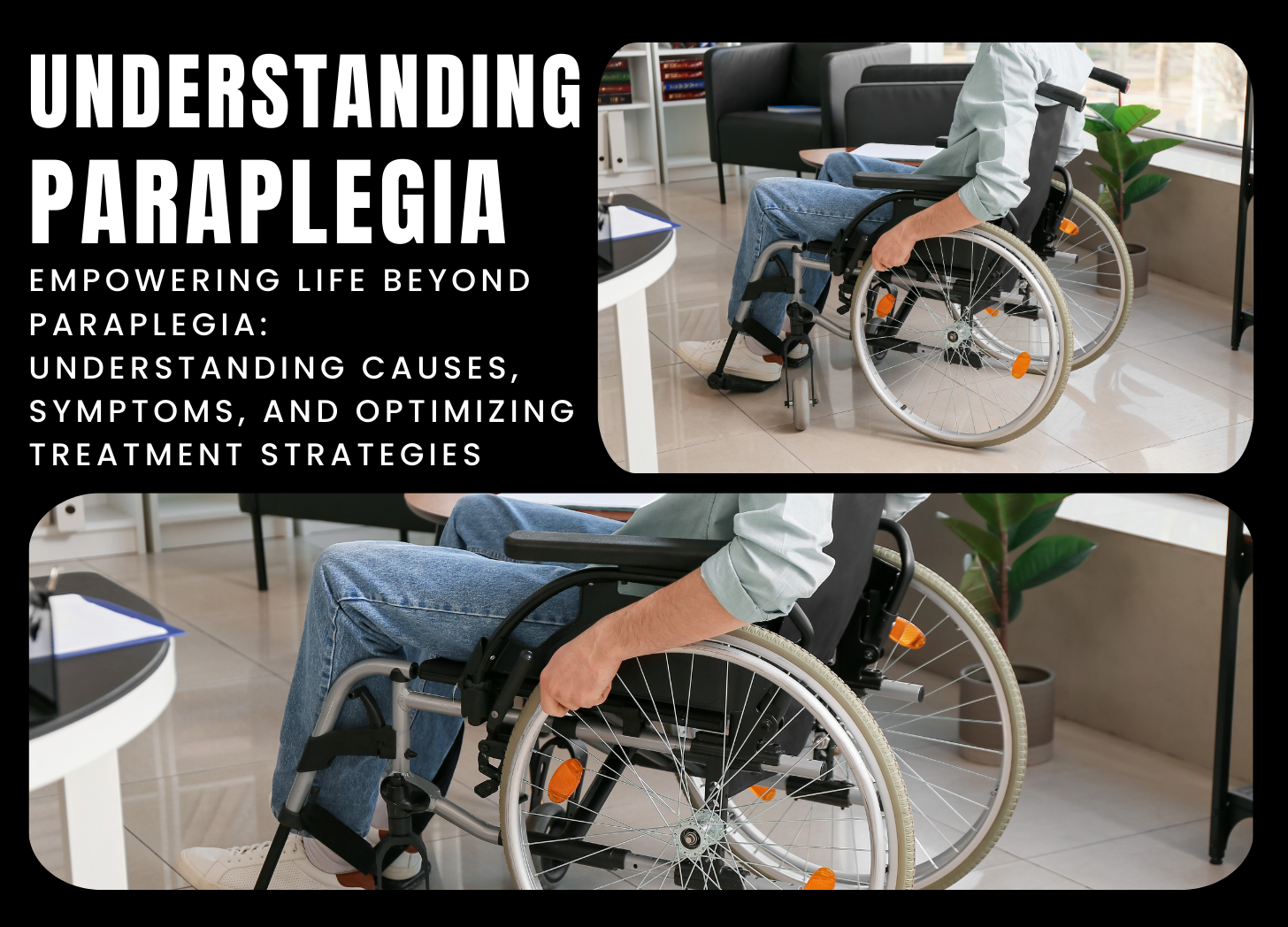Contact Us
Contact Us

Paraplegia is a condition that causes paralysis of the bottom half of the body, which includes both legs and, in many cases, the lower trunk. It is caused by spinal cord injury, which usually occurs at or below the thoracic spinal level. Paraplegia can be caused by a variety of events, including traumatic injuries (SCI) from falls, automobile accidents, or sports injuries, as well as non-traumatic causes such as tumors, infections, or vascular problems affecting the spinal cord.
The most prevalent cause of paraplegia is a traumatic spinal cord injury, which can result in partial or full loss of sensation and motor function below the level of injury. Damage to the spinal cord interferes with the passage of nerve impulses between the brain and the rest of the body, resulting in paralysis and loss of voluntary muscular control in affected areas. Non-traumatic causes of paraplegia, such as tumors or infections, can also harm the spinal cord and produce comparable symptoms.
Common paraplegia symptoms include loss of feeling, muscle weakness or paralysis in the lower limbs, loss of bowel or bladder control, sexual dysfunction, and potentially fatal consequences such pressure sores, urinary tract infections, or blood clots. The severity of symptoms and functional restrictions varies according to the location and extent of spinal cord damage.
Paraplegia is often diagnosed after a complete medical history, physical examination, and diagnostic procedures such as imaging examinations (X-rays, magnetic resonance imaging [MRI], or computed tomography [CT] scans) to determine the extent and location of spinal cord injury or compression. Neurological testing can also be used to assess sensation, muscular strength, and reflexes in the affected areas.
The goal of paraplegia treatment is to maximize independence while both treating symptoms and preventing consequences. Depending on the nature and severity of the ailment, treatment may include physical therapy, occupational therapy, and assistive devices (such as wheelchairs, braces, or walking aids) to enhance mobility and function. Medication may be recommended to treat pain, muscular spasms, and other paraplegia symptoms.
In some circumstances, surgical procedures such as spinal cord decompression or stabilization may be used to relieve pressure, repair injured tissue, or address structural abnormalities. Medical advances, such as epidural stimulation or neuroprosthetic devices, have the potential to improve motor function and quality of life for paraplegics.
In conclusion, paraplegia is a disabling condition characterized by paralysis of the lower half of the body, usually caused by spinal cord damage. While paraplegia can have serious physical and emotional consequences, effective therapy and support can help people with paraplegia reach their best function and quality of life.
References:
1.National Institute of Neurological Disorders and Stroke. (2022). Spinal Cord Injury: Hope Through Research. Retrieved from https://www.ninds.nih.gov/Disorders/Patient-Caregiver-Education/Hope-Through-Research/Spinal-Cord-Injury-Hope-Through-Research
2.Mayo Clinic. (2022). Paraplegia. Retrieved from https://www.mayoclinic.org/diseases-conditions/paraplegia/symptoms-causes/syc-20376383
Post a Comment